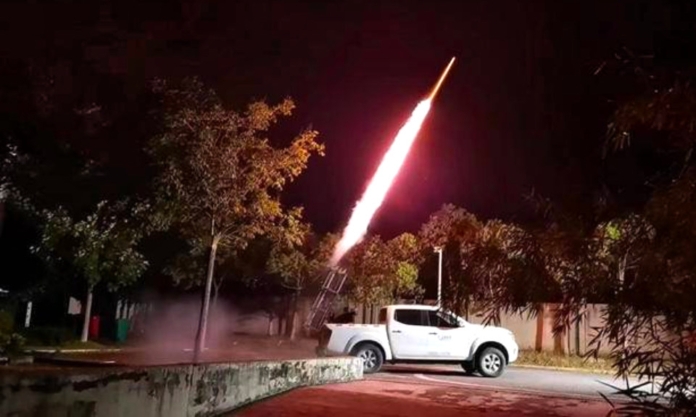Urban myth. We’ve all heard the tales of “them making it rain”. Rockets or planes doing so-called “cloud seeding”. But we really weren’t 100-percent sure how. Now though, we have photographic evidence of them doing so, accompanied by a host of interesting data.
It all began in Nanjing in 2014. That’s when the second Youth Olympics were held in our fair city. In August. In Nanjing. “What were they thinking?”, we all wondered. But when the day came, a haze of moisture had settled over the city, keeping temperatures in the mid 20s for 2 weeks so that the athletes could compete at their best.
Like today, basically.
IOC Chairman, Thomas Bach, commented afterward that the organisation of the Nanjing Games had been “flawless”. He got that right. And he’d likely been guaranteed it included organising the weather.
It’s been that way ever since. Once a year or so, the word spreads that they’re making it rain again. Now it’s official. And they’re being right up front about it.
As the Yangtze Evening News has reported, between 26 and 28 August, the Nanjing Meteorological Bureau carried out “artificial precipitation enhancement”. For the Chinese-language students among our alert readers, that would be “人工增雨”.
The equipment in question would be the WR-98 Special Artificial Rain Enhancement Rocket (WR-98型专用人工增雨火箭). As can be seen from the accompanying photograph, it is launched from the back of a pick-up truck.
For those interested, the similar-sounding, but probably-identical “WR-98 Rain Enhancement and Hail Suppression Rocket” (WR-98雨增强和冰雹抑制火箭) is sold on Alibaba for between US$80 and US$200 per piece (minimum order 10 pieces).
But beware, it also turns out that there are the “Regulations on the Administration of Weather Modification” (人工影响天气管理条例). The Regulations, which date from as long ago as 2002, have “the purpose of strengthening the administration of weather modification and preventing and mitigating meteorological disasters”.
Therein, Article 16 states, “The transportation and storage of anti-aircraft guns, rocket-launching devices, shells and rockets used in weather-modification operations shall comply with the laws and regulations of the State on the management of weapons, equipment and explosives”.
Two locations in Nanjing were used for the firing of the cloud-seeding rockets; one in Pukou District and the other in Luhe District. Both were chosen for their “local climatic characteristics and geographical conditions” (Article 8 of the aforementioned Regulations). Specifically, that would be the new site of Pukou District Meteorological Bureau (118°35′27″ east; 32°03′59″ north) in the former and the Xujia Memorial Hall (118°44’40” east; 32°30′40″ north) in the latter.
Both launches required advanced permission from the airspace control authorities, while observers were not permitted within 50 metres of the launch vehicles.
In the aftermath, for alert readers who inadvertently come across debris or remnants of such rockets, they should not be touched or disturbed in any way. The matter should be immediately reported to the nearest police station or by telephone to the Nanjing Meteorological Bureau (83287310), the Liuhe District Meteorological Bureau (57126756) or the Pukou District Meteorological Bureau (58882117).









